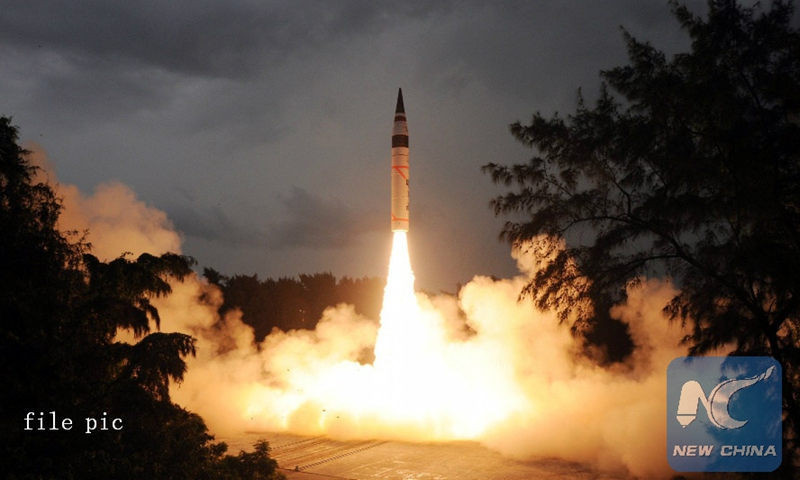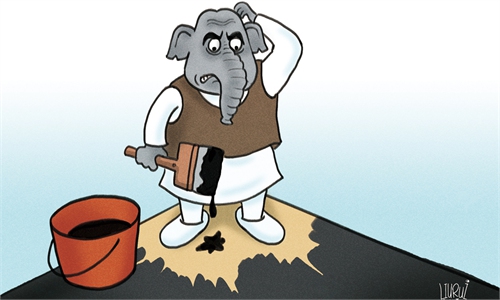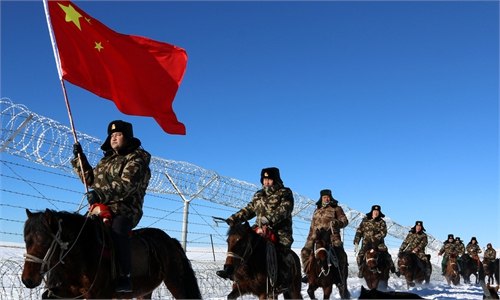
Photo released by India's Defence Research and Development Organization (DRDO) on Sept. 15, 2013 shows India's nuclear-capable missile Agni-V in the Wheeler Island, India.Photo:Xinhua
Some Indian and Western media outlets have hyped a recent Indian missile test. According to their reports, India on Wednesday successfully launched the Agni-5, the country's longest-range missile, which is capable of striking targets up to 5,000 kilometers away with high degree of accuracy.Those reports attempted to link the launch with the border tensions between China and India. The Times of India said the launch was "a strong strategic signal to China." Wall Street Journal described it as "a warning shot" to China.
Such exaggerated rhetoric is only a tactic to ramp up India's momentum in the face of the complicated geopolitical strategic environment.
Many Indian people have complaints toward their government on various issues, and many contradictions can be seen at home. For example, the daily new confirmed COVID-19 cases are still as high as more than 10,000. The epidemic continues to severely impact India's economy, and the Modi government appears to lack an effective approach to deal with it. Furthermore, a yearlong series of ongoing protests by farmers against the Indian government has also stepped up.
Against this backdrop, the Modi administration is eager to find a new external hotspot issue to divert domestic attention. This has been one of the Modi administration's old tricks, which China has got used to.
The West, especially US media outlets, politicians and military officials, have in recent days frequently hyped what they claimed China's test on a "hypersonic missile" in August. Washington has always taken advantage of every opportunity to play up China's "treat" to win more defense budget and ramp up its arms sales.
In this context, the West, especially the US, must be pleased to see India's test of Agni-5. From their perspective, if New Delhi can stoke up a regional arms race, Washington can make more profits selling more weaponry and arms to New Delhi. It is seen that by virtue of India's launch of the Agni-5, Western and US media outlets are sparing no effort to hype the "arms race" between China and India, incite the anti-China sentiments of India, and create the fear of China.
The root of the China-India tensions over the recent two years lies in the series of provocative practices by the Indian government on its borders with China. The incitement by Indian and Western media outlets have also played a big role, adding fire to the tensions between China and India.
In the face of increased nationalist sentiment and the fanning of flames from the West, the Modi government seems to lack a clear strategy on how to deal with the tensions with China.
If the Modi government could remain sober, it should stay away from the incitement from the West and the mounting populist mind-set, and those asking it to resort to military actions to deal with the border tensions with China. None of them is constructive to improve India's national strength and international status and image. The Modi administration should avoid being misled by Western media outlets and politicians. It needs to attach more importance to domestic issues, such as improving the wellbeing of the public and seriously handling the epidemic, instead of hyping the so-called China threat.
The author is director of the Department for Asia-Pacific Studies at China Institute of International Studies. opinion@globaltimes.com.cn


